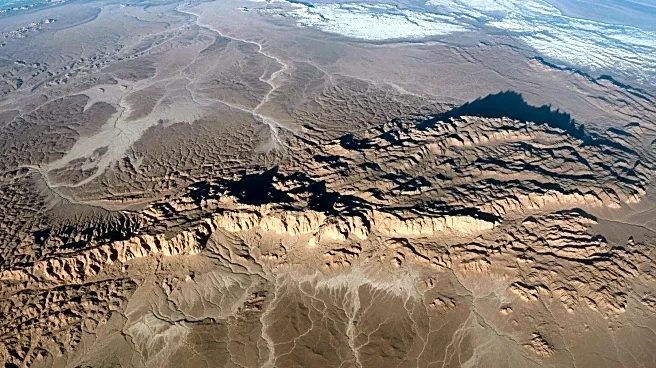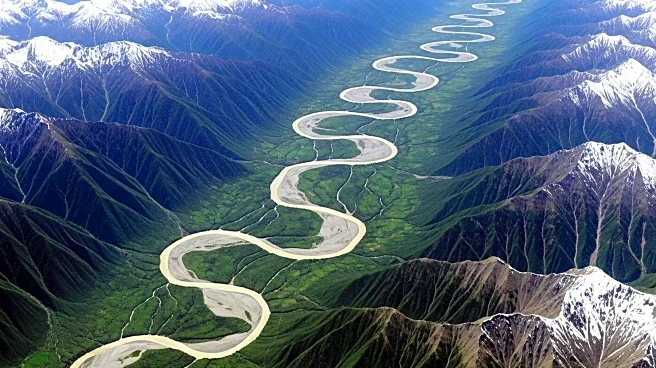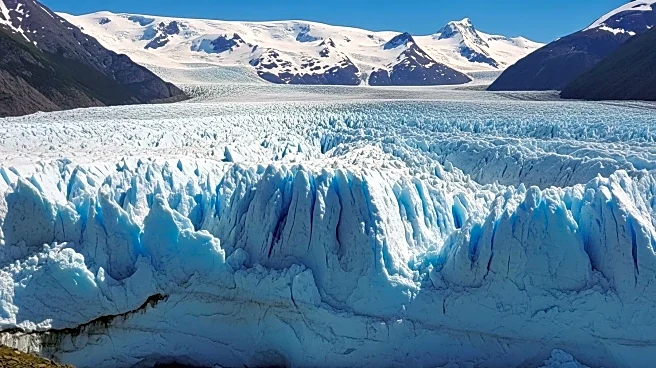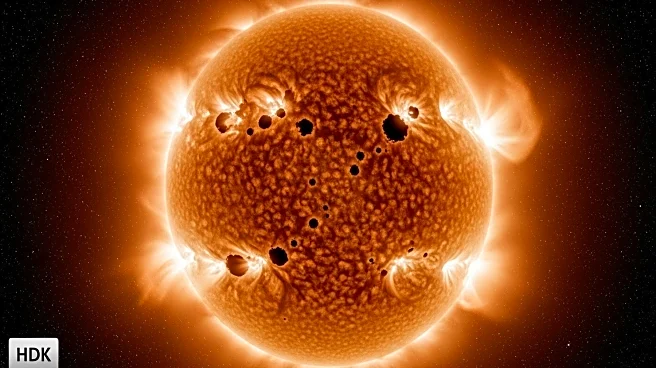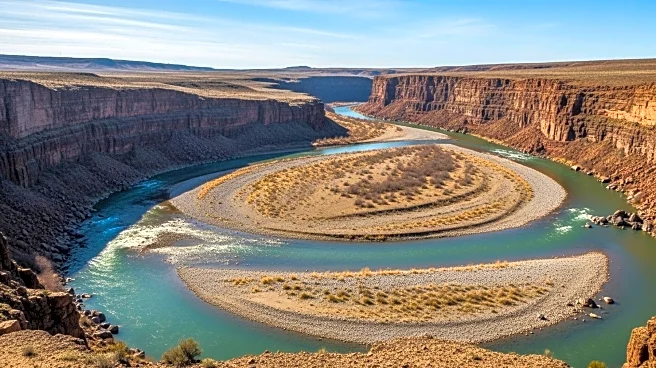What's Happening?
NASA's Earth Observatory has documented a rare geological phenomenon in Kazakhstan, where a massive sandy formation, known as the 'sandy slug,' is slowly migrating across the floodplains. This movement, captured through satellite imagery, provides scientists with a unique opportunity to study geomorphological processes. The sandy slug, stretching over hundreds of meters, moves at a rate of meters per year, influenced by seasonal water flows, sediment deposition, and wind dynamics. The formation's irregular surface, marked by ridges and depressions, indicates active sediment transport and erosion, offering a live laboratory for researchers.
Why It's Important?
The study of the sandy slug's movement is significant for understanding sediment mobility and floodplain evolution, which can have broader implications for similar geological features worldwide. This research could enhance knowledge of sedimentary processes in semi-arid climates, potentially informing environmental management and conservation strategies. The phenomenon also highlights the dynamic nature of Earth's surface, even in seemingly static landscapes, and underscores the importance of satellite technology in monitoring and understanding geological changes.
What's Next?
Researchers will continue to monitor the sandy slug using satellite data and on-site field studies to model sediment transport and predict future movements. This ongoing observation is crucial for providing insights into floodplain dynamics and the long-term evolution of semi-arid landscapes. The findings could also inform local communities and ecosystems about potential changes in drainage patterns and soil moisture levels, which are critical for vegetation and wildlife.
Beyond the Headlines
The sandy slug's movement offers a glimpse into past geological activity in Central Asia, potentially resembling ancient patterns that shaped river plains. This research could also contribute to understanding the impact of climate change on sedimentary processes, as variations in snowmelt, rainfall, and temperature may affect sand migration. The study emphasizes the interconnectedness of natural systems and the need for comprehensive environmental monitoring.
